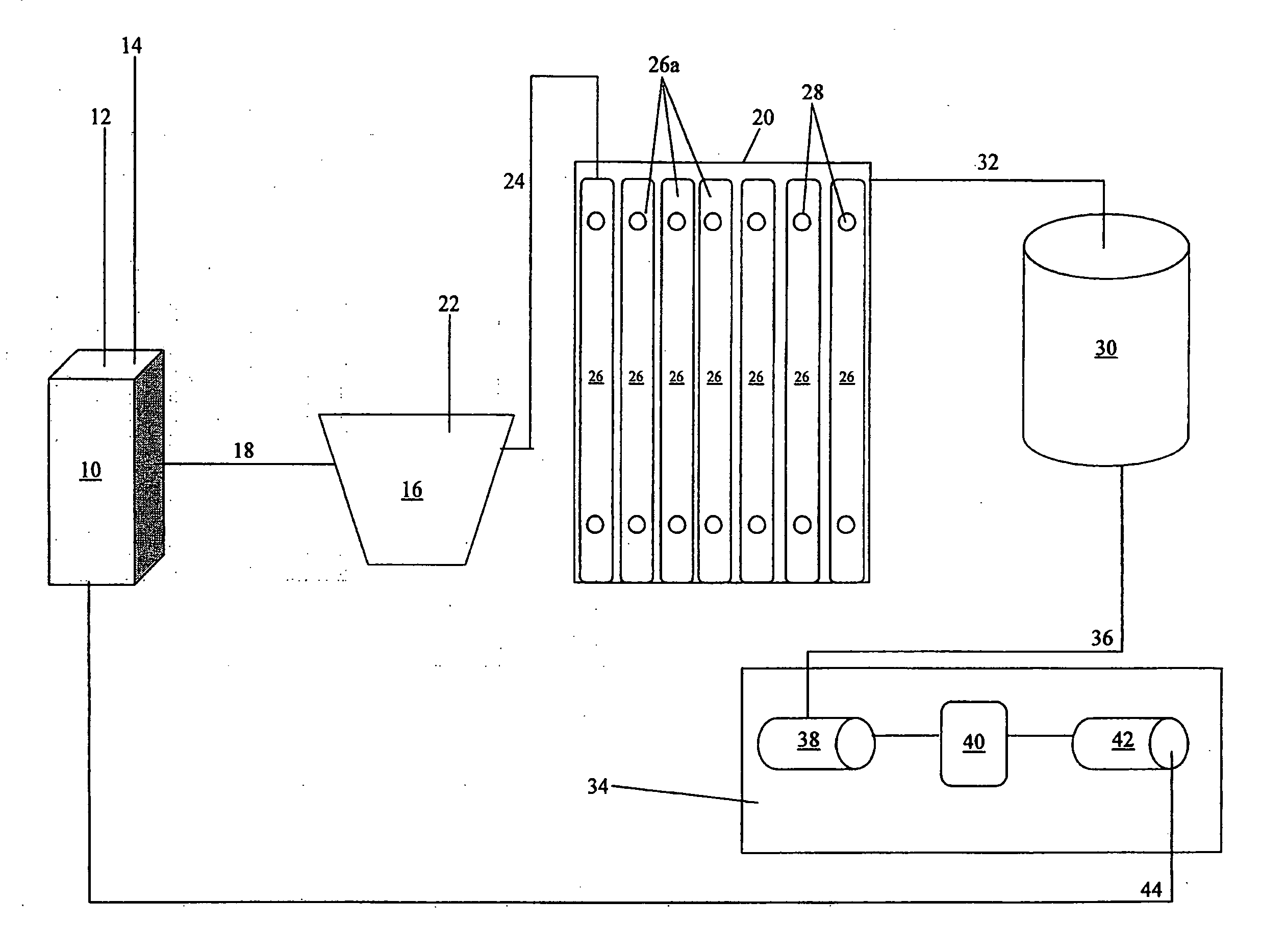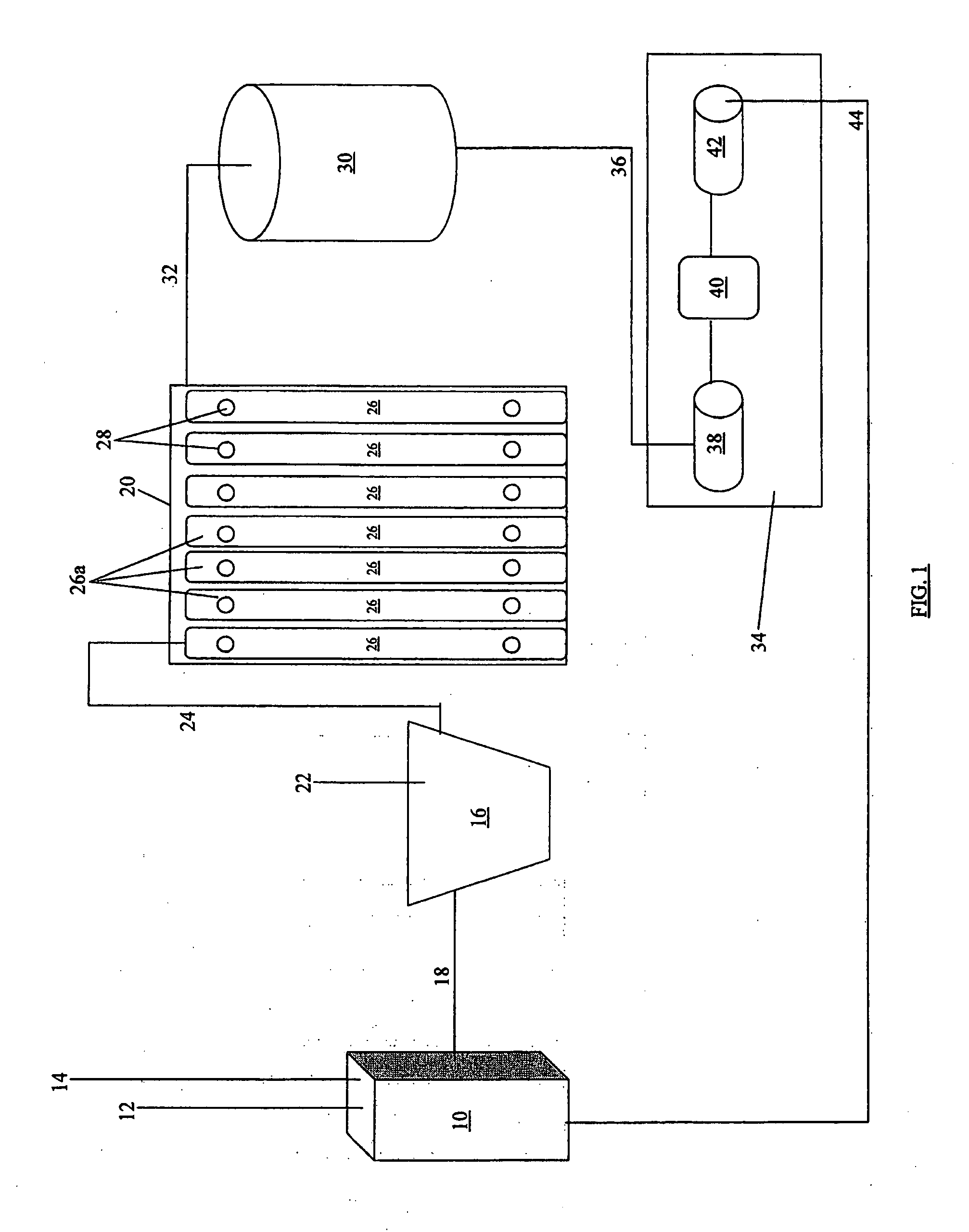Process and system for producing algal oil
a technology of algal oil and production process, which is applied in the direction of biofuels, biomass after-treatment, bioreactors/fermenters, etc., can solve the problems of soybean use as a biofuel feedstock, risk of extreme cost spikes, and variability in the cost of soybeans
- Summary
- Abstract
- Description
- Claims
- Application Information
AI Technical Summary
Benefits of technology
Problems solved by technology
Method used
Image
Examples
Embodiment Construction
[0013]The present invention relates to a system and method for producing products that may be utilized as fuels from cultivated algae. It will be understood by those skilled in the art that the products produced from the below described process may be utilized for various other purposes. More particularly, the present invention relates to a method for producing an algal oil.
[0014]The method comprises combining carbon dioxide, water and nutrients required for lipid production by an algal strain to form a growth medium. The ratio of carbon dioxide to water is between approximately 50-100 cubic feet per hour per 1,000 gallons of water per day. Approximately 3.75 liters of combined nutrients are provided on a daily basis. Specifically, referring to FIG. 1, the process begins with the formation of a growth medium for an algae strain in an incubation tank 10. Water and the nutrients required for growth of the algae are provided to the incubation tank 10 at a flow rate of approximately 0.1...
PUM
| Property | Measurement | Unit |
|---|---|---|
| wavelength | aaaaa | aaaaa |
| wavelength | aaaaa | aaaaa |
| illuminance | aaaaa | aaaaa |
Abstract
Description
Claims
Application Information
 Login to View More
Login to View More - R&D
- Intellectual Property
- Life Sciences
- Materials
- Tech Scout
- Unparalleled Data Quality
- Higher Quality Content
- 60% Fewer Hallucinations
Browse by: Latest US Patents, China's latest patents, Technical Efficacy Thesaurus, Application Domain, Technology Topic, Popular Technical Reports.
© 2025 PatSnap. All rights reserved.Legal|Privacy policy|Modern Slavery Act Transparency Statement|Sitemap|About US| Contact US: help@patsnap.com


